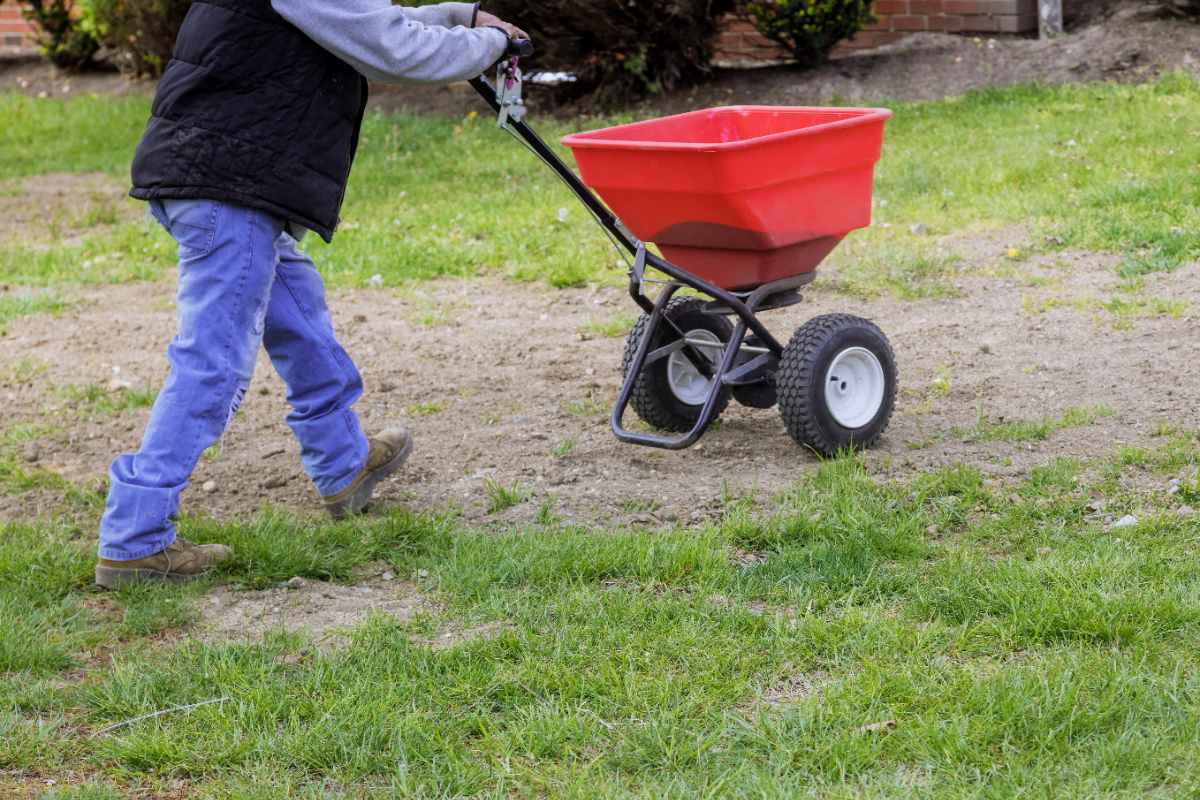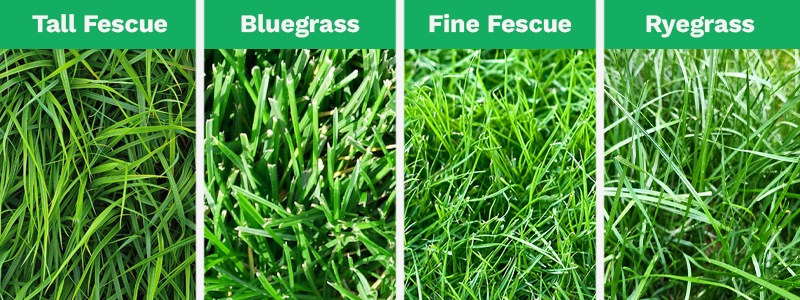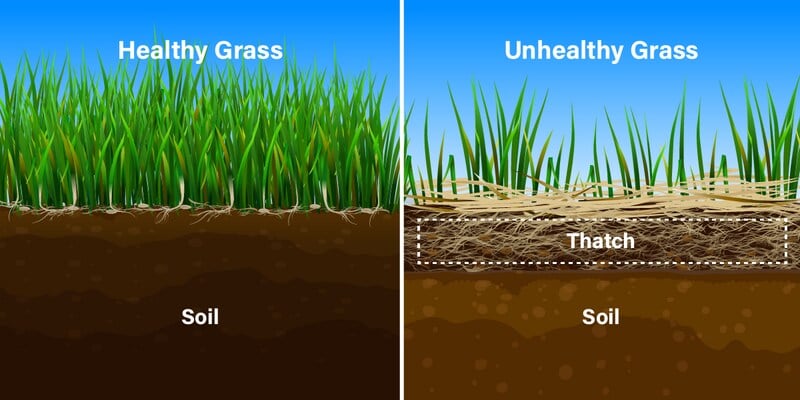
Local weather conditions, soil quality, and moisture levels are a few things you need to consider when you dormant seed your lawn.
Dormant seeding gives your northern, cool-season lawn a head start in the spring and can bolster the overall health of your lawn. But without the right conditions, the grass seeds may not take hold, and you will waste your effort. To properly dormant seed your lawn, you need the right tools, the right grass seed, and most importantly, the right timing.
| Project difficulty: Beginner Estimated time to complete: About 1-6 hours, depending on how many preparatory steps your lawn requires. Project cost: The cost to seed a lawn varies depending on grass type, location, and lawn size. On average, seeding your lawn costs $0.09 to $0.15 per square foot and between $427 and $1,514 for an average yard. |
- 1. Test Soil
- 2. Select a Planting Time
- 3. Choose the Right Grass Seed
- 4. Remove Debris
- 5. Mow Low
- 6. Remove Excessive Thatch
- 7. Aerate (Optional)
- 8. Spread Grass Seed
- 9. Roll the Area (Optional)
- 10. Water Lightly
- 11. Mulch with Straw (Optional)
- 12. Fertilize in Spring (Optional)
- FAQ About Dormant Seeding Your Lawn
1. Test Soil
The first step to dormant seed your lawn is to conduct a soil test to ensure that your soil can support healthy root growth. There are two options for testing your soil:
- DIY soil test: Use a soil test kit.
- Local Extension office: Don’t want to test your soil yourself? For a fee, your local Extension office will test your soil if you send in a soil sample.
Unbalanced soil that is too acidic or too alkaline needs soil amendments to adjust its pH and boost fertility.
Moisture levels are also key to dormant seeding. If you live in an area without winter snow cover, dormant seeding may not be the right option for your lawn. Areas that receive regular snowfall or rainfall are ideal for dormant seeding. Snow cover protects the seeds, and when it melts in the spring, the snow provides water to the soil for the seeds.
| A debris-free, freshly mowed lawn is essential for dormant seeding. LawnStarter offers mowing services at an average price of $48 per service with an average rating of 4.5/5 from our customers. |
2. Select a Planting Time
Next, you’ll need to schedule a planting time. The right timing is key, since if you plant seeds too early, they will germinate prematurely and die in the extreme winter cold.
Dormant seeding should occur between late October and December. Ideally, you should plant the seeds right before the first snowfall of the year.
Here are some signs indicating the best time to plant grass seed in late fall:
- Soil temperatures are under 40 F.
- Air temperatures have been consistently under 50 F for several days.
- There is no snow covering the ground.
- The ground is not yet frozen.
3. Choose the Right Grass Seed

Dormant seeding works best in snowy northern climates with cool-season grasses. It’s not usually recommended for southern warm-season grass types (Bermuda, bahia, St. Augustine, etc.). Depending on the amount of sunlight in your yard and the level of maintenance you want, choose the right grass seed for your lawn for the best chance of success come spring.
Here are the best grass seeds for winter dormant seeding:
- Fine fescue
- Tall fescue
- Perennial ryegrass
- Kentucky bluegrass
4. Remove Debris
Before you spread seed over bare patches, open spaces, and thinning grass, remove all debris, including:
- Leaves
- Twigs
- Rocks
- Sticks
When you dormant seed, the seed needs to make its way into the soil. If your lawn is covered with fallen leaves or other debris, it hinders the seed from reaching the soil, reducing seed-to-soil contact.
| This autumn, don’t fall behind on your lawn chores. LawnStarter’s leaf removal services will rake up the leaves in your yard so you don’t have to worry about finding time to tidy up your lawn. |
5. Mow Low
Mow your lawn to a height of 2 inches. It’s easier for the seed to reach the soil when the grass is trimmed short. Follow the one-third rule for mowing grass and never cut more than a third off your grass in a single mow. It may take multiple mows to get the grass short enough for dormant seeding.
6. Remove Excessive Thatch

Dethatching isn’t necessary for every yard, but if your lawn has excessive thatch, you need to dethatch your lawn before you apply new seed. When there is too much thatch, grass seed will get stuck in the thatch and might not reach the soil.
When thatch levels are over 1/2 inch high, there is too much thatch. Help your seeds grow by dethatching your yard before dormant seeding.
Pro Tip: Kentucky bluegrass (KBG) is the most thatch-prone cool-season grass, especially if you fertilize regularly. To prevent excessive thatch, dethatch your KBG lawn annually or once thatch exceeds 1/2 inch. For any cool-season grass, the best time to dethatch is in early fall.
7. Aerate (Optional)

When soil is loose, it’s easier for grass seeds to make their way into the ground, which improves seed-to-soil contact. Compacted soil makes it harder for seeds to establish.
Here are two ways to alleviate compacted soil:
- Rake the ground. Loosen up the top layer of soil enough for the seed to penetrate the soil.
- Aerate your lawn. Core aeration improves seed-to-soil contact. Use a core aerator or a spike aerator. If you have large patches of bare soil, you might need a power rake or vertical mower.
| Compacted soil is bad for grass growth, so hire a LawnStarter pro to aerate your lawn. LawnStarter offers aeration and overseeding services at an average cost of $362 per service and an average rating of 4/5 from our customers. |
8. Spread Grass Seed
Once you have selected a cool-season grass, evenly apply grass seed in your yard.
To distribute seeds evenly, make 2 to 4 passes over your lawn with a broadcast spreader, if you are using one. This helps ensure your grass grows uniformly and fills in bare patches. For small patches, you can hand-seed instead.
After you spread the seeds, raking them into the soil with a hand rake helps incorporate them into the ground. This improves seed-to-soil contact and reduces the chances of birds eating them.
Pro Tip: Dormant seeding has a higher seed mortality rate due to freezing conditions and excessive soil moisture, so spread extra seed over your yard, about 30% to 50% more than the recommended seed rate. During the winter establishment period, many grass seeds are washed away, eaten by birds, or die off in a hard frost, so you need extra seed to compensate.
9. Roll the Area (Optional)
This step is also optional, but after you rake the seed into your soil, you can gently roll a lightweight lawn roller over the surface to lightly compact the soil. This improves seed-to-soil contact, which will help ensure more seeds can establish in the soil.
10. Water Lightly
After you plant the seed, lightly irrigate the seeded areas with 0.05 to 0.10 inches of water.
Keep the soil moist throughout the cold season. If you live in a dry area, water frequently with light waterings. Thanks to the cold weather, the damp will stay around longer, so you won’t have to water your yard frequently.
Do not overwater. You don’t want to drown the seeded spots in water. “Moisture and temperature from watering could germinate the (seeds) during the winter, causing seedling mortality,” says Edward Bahm, plant materials specialist at the U.S. Department of Agriculture.
11. Mulch with Straw (Optional)
Snowfall acts as a blanket that protects the seeds from being scattered. However, if snowfall comes and goes throughout the winter, you can cover your grass seed with straw. This protects it from being displaced or eaten by wildlife until your grass sprouts in the spring.
12. Fertilize in Spring (Optional)
After germination in spring, give new grass 6 to 8 weeks to establish before you apply a starter fertilizer. Use a broadcast spreader to get even coverage.
Do not apply fertilizer at the same time that you dormant seed.
See Related: How to Care for New Grass
FAQ About Dormant Seeding Your Lawn
No. Minimize foot traffic on the seeded area until the grass has grown in. Foot traffic can scatter seeds or cause compacted soil, reducing seed-to-soil contact.
There are a few things you can do to increase the chances of a successful dormant seeding:
• Test and prepare your soil with soil amendments if needed.
• Lightly water the seeded area when the weather warms.
• Use a starter fertilizer.
Get a Head Start on Your Lawn

Dormant seeding is a good way to fill in your lawn’s bare or thinning patches in the spring. With proper soil preparation and watering, dormant seeding will spruce up your yard in no time.
If you need help getting your soil ready for dormant seeding, let us connect you with a LawnStarter lawn care pro who offers every lawn care service you need, including lawn mowing, aeration, dethatching, and leaf removal.
Read Next:
Sources:
- “Dormant Seeding Your Lawn.“ By Bob Mugaas, Extension educator and turfgrass specialist, and Sam Bauer, associate Extension professor. University of Minnesota Extension.
- Edward Bahm, plant materials specialist at the U.S. Department of Agriculture, Bismarck, ND. Personal interview.
- “Mild Winter, What Does It Mean for Overseeding of Turf or Dormant Seeding?“ By Jim Murphy, Extension specialist. Rutgers, The State University of New Jersey.
- “Pamela Sherratt On Dormant Seeding.” By Pamela Sherratt, sports turf Extension specialist. SportsField Management.
Main Image: A man dormant seeds a patchy lawn in early winter. Photo Credit: ungvar / Adobe Stock